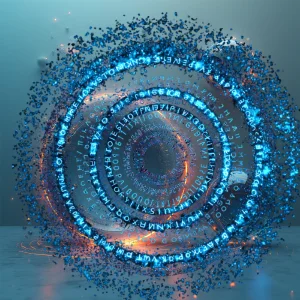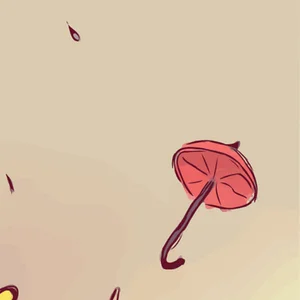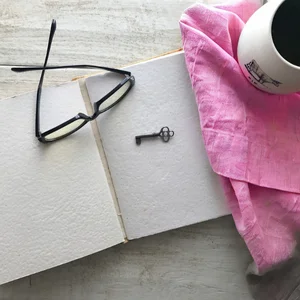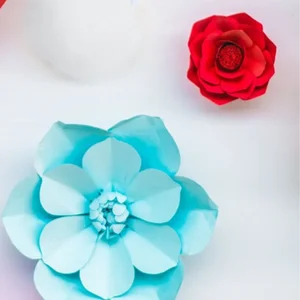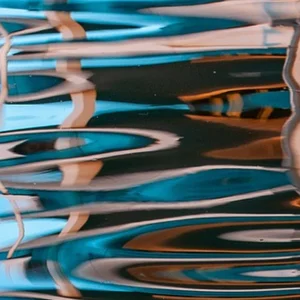Just when I thought I had completed the three-part exploration on visibility and I was getting ready to publish the third article, ( you can read the first article here and the second here) my eyes landed on a sentence from one of my earliest journals. And I gasped. How did I forget about this ?!?
I reviewed notes from my reflections over time, I remembered nuanced conversations I had with close friends and clients. I sat in silence for hours.
Attention-seeking, the right performance, ways to get even more visible in a world obsessed with visibility – the conversations are abundant, rich in nuances and dimensions.
What about the other side? What about the people who have an immense heart to share but are too afraid to step away from the wall? The people who hide in the shadows afraid to be seen, afraid to share, afraid to be acknowledged?
Not the deeply humble people who are not concerned in the slightest with how they are being perceived by others.
I’m talking about the ones who would like to be seen, who long to belong.
When wrapped in the safety of being alone, they imagine the great conversations they would have and the smiles they’d share. But the minute they are in the company of others, their knees start shaking, they rush through ideas and words in an attempt to say as little as possible and can’t wait to find a way to hide somehow. They’ve learned that the safest place to exist is in the spaces between other people’s conversations, the “almost-but-not-quite” being there. They only know how to walk on eggshells.
Professional lurkers, watching life from the sidelines, with a burning desire to be part of but an equally paralyzing fear, living in a state of perpetual preparation for rejection. Even when they muster the courage to make their presence visible in some way, they prime the ground with a buffer that’s supposed to take the first blow of rejection.
But if you are ever lucky to know them closely, you’d be amazed: they are the ones with the most insightful comments who never make them, the one with the most beautiful art that is always hidden behind the curtain, the ones with the deepest wisdom who somehow learned that they never have anything valuable to share. Or, they, at least instinctively, understand the value but the fear of potential rejection is suffocating the desire to share.
This is quite a turn of page from the previous article. Where “see me” became a pattern for someone who felt overlooked or frequently dismissed, here is more like felling “too seen”, but in ways that were interpreted as dangerous, shameful or overwhelming. Again, just like in the “see me” exploration it’s not facts that are responsible for the internalized experience, but interpretations, meanings we attached to certain events.
Someone laughed when you mispronounced a word and this not only sparked the feeling of embarrassment, but you made an association that guided your life forward: speaking up equals humiliation. Or your vulnerability was met with judgment: you felt the hurt but you have also concluded that sharing your true self is dangerous. Your authentic excitement and endless curiosity was dismissed as “too much” by an overworked parent, or someone who was already dealing internally with their own struggles – you didn’t just feel disappointed, you internalized that your natural expression is wrong or unacceptable.
Here we deal with an interesting twist: while the visibility-seekers carry a silent conversation around “I’m not enough,” or ” nobody notices me” , at this end of the spectrum the main filter, the cognitive bias becomes “I’m too much” or “I always make mistakes.”
And it gets even more complex: sometimes you didn’t even have a direct experience, but you witnessed someone else being embarrassed or dismissed and you unconsciously made the decision to always play safe. Or you grew up watching a parent being consumed by the fear of expressing themselves and you internalized it as the only option for proper behavior. Later on, when you have learned that you could express your thoughts and feelings and desires, you find it impossible for you. You keep wondering how come others can do it so easily, you conclude that something is wrong with you and you find yourself bursting in moments of anger when you express all the locked-up feelings at once and it doesn’t turn out well. And the vicious circle just gets reinforced.
The same human need for connection and belonging exists, but it’s coupled with learned evidence that visibility equals danger “when people see me , bad things happen”. The perceived solution? Become a master of controlled invisibility: edit yourself, cutting away so much from who you are that what remains feels safe but always hungry. Adapted but haunted.
This is only the bird’s-eye view. Because hiding is never passive. It becomes a strategy that keeps you always on your toes:
You learn how to choose a spot in the room where you can see everyone but aren’t in anyone’s direct sight. Making sure you are somewhere in the middle or the last, but never the first, in line.
You become an expert at asking redirecting questions that keep others talking about themselves, deflecting attention with humor that’s self-deprecating but not concerning enough to invite deeper inquiry.
Or you can’t even imagine sharing anything without prepping the ground, hunting for the right moment, rehearsing the right words, creating potential scenarios and imaginary adjustments of your reactions. The never-ending sound of “what if?”
And that safety of almost: almost joining the conversation; almost sharing the idea; almost reaching out. “I could if I wanted to, but I choose not to” – which, even if it hurts, feels safer than the potential failure.
Even the closest, most intimate relationships become shadows of what they could be because you are caught up in this pattern of self- editing, managing your internal experience so that you are always only half-expressing your needs, your dreams, your desires, your feelings.
Yet another never-ending loop : the more you want connection, the more you monitor and control your behavior. The more you control, the less authentic you become. The less authentic you are, the less satisfied you feel with the connections you do make. Which brings you back to the initial conclusion: hiding is safer than being seen.
Before you know it, everything feels just like the mourning for all the conversations not had, connections not made, opportunities not taken, and the person you might have been.
This might be the most painful conversation from this series , because the tragedy isn’t just personal – it’s collective. Every person who remains hidden in plain sight represents not just their own unfulfilled potential, but everyone’s loss.
Just as in “see me” pattern, the solution isn’t to push through the terror with willpower alone. That would be like telling someone afraid of water to jump into the deep end of a muddy lake.
The path forward begins at the foundation : recognizing and understanding the patterns. It becomes transformative when you choose to actively rewire the neural pathways that have been reinforced for years, perhaps decades. It’s the difference between managing symptoms and addressing the root.
This work at the root – the patient, compassionate rewiring of old wounds – has nothing to do with becoming more visible. It’s about reclaiming the energy you’ve spent on hiding and redirecting it toward living. It’s about moving from hiding to expression, from protection to connection, from the shadows into the fullness of your own life.
The question isn’t: “How can I hide better to stay safe?”
The question is: “How can I learn to trust that I’m worth the risk of being seen?”
Even deeper : “What would it look like to build a relationship with myself that’s so solid, so grounded in self-acceptance, that others’ reactions – while still important – no longer determine my worth?”
When you can find the answers that are not coming from the voice of fear, everything shifts for good. The rehearsing for potential conversation becomes natural expressions. The art hidden behind the curtain finds its way to the light. The wisdom you’ve been hoarding out of fear becomes a gift you’re willing to share. You learn how to express your feelings and desires and your relationships transform into genuine connections and strong partnerships. Your work becomes about true contribution rather than avoiding mistakes.
I don’t know a lot of things, but this I know for sure: the world is in great need of genuine presence, the imperfect beautifully human version you’ve been afraid to share.
Shared with Love,
Gabriela
This article is part of a series exploring different angles and dimensions of this topic. You can read the first articles here and here. There are two more coming.
I don’t pretend I KNOW. I write from my experience and from my heart, hoping that what I share will be the support someone needs on their journey. I reserve the right to be wrong and change my mind as I grow in my own understanding.
Have questions, comments or suggestions? Please never hesitate to reach out, I always reply to messages gabriela@experiencetruewealth.com
Join the subscription-based version of the blog to receive exclusive content and practical exercises that meet you where you are, whether you’re searching for clarity, courage, or simply a moment of stillness and guide you deep into your journey.

